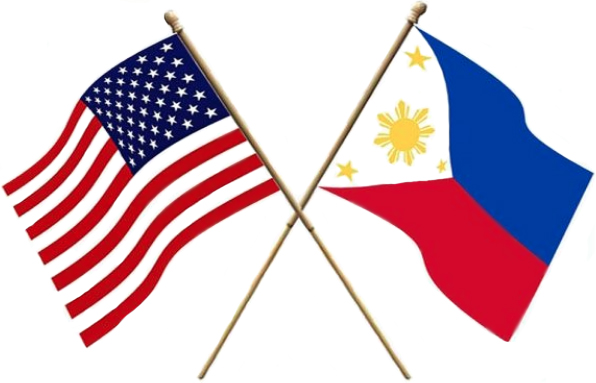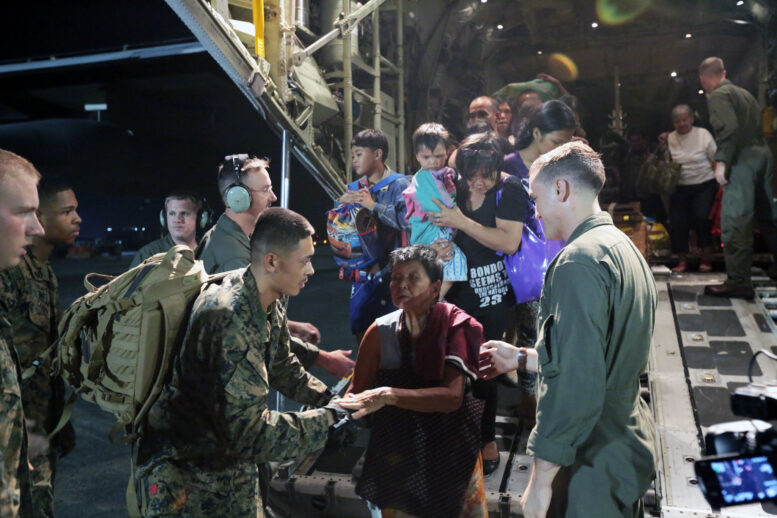In his last article in the Maritime Review magazine (March-April 2020 issue) Commodore Carlos L Agustin AFP (Ret), Founding President of The Maritime League, related some interesting points that led to the administrative control of two large U.S. bases in the Philippines in the late 1970s. The designation of Filipino base commanders, with U.S. facilities inside, allowed the Philippine flag to fly singly in those major installations. This new set-up emanated from the 1966 Ramos-Rusk Agreement that shortened the US stay in Philippine soil by 54 years up until 1992, instead of 99 years under the 1947 Military Bases Agreement. While the 1951 Philippines-U.S. Mutual Defense Treaty remains effective even after the Americans left in 1992, it no longer has a mechanism to implement the pact.
The departure of the Americans troops coincided with their global drawdown resulting from the dissolution of the Warsaw Pact a year earlier that changed the bipolar world order to multi-polar. This event led to the reduction of US Economic Support Fund and the frequency of RP-US military-to-military interactions starting 1993, but opened up the acquisition of Excess Defense Articles (EDA) by the Philippines, and the signing of the Mutual Logistics Support Agreement (MLSA) the following year.
Not long after, many ethnic, religious, and territorial conflicts re-emerged worldwide prompting the U.S. to recalibrate its strategy to deal with the new global security landscape. Its defense-in-depth strategy called for establishing bases and stations to deter potential adversaries from attacking continental U.S., supporting its mobile forces anywhere in the world, and responding to contingencies far from the American shores.
Realizing the lack of protection when Mischief Reef (Panganiban Reef) was suddenly occupied by China three years earlier, newly installed Philippine President Joseph Estrada convinced Congress to ink the Visiting Forces Agreement (VFA) with the U.S. in 1998 to operationalize the defense treaty. US Defense Secretary William Cohen and his Philippine counterpart Secretary Orlando Mercado formalized the reopening of security cooperation activities including setting the guidelines for the conduct and protection of American troops visiting the Philippines, joint training exercises, and other defense-related activities. One of these was the conduct of the Defense Experts Exchange in 1999. The Philippines sent a 5-man delegation to the Pentagon, consisting of DND Undersecretaries Feliciano Gacis and Esteban Conejos, Army Colonel Victor Corpuz, Air Force Colonel Roberto Nuqui and Navy Captain Emilio Marayag to discuss the manner by which to enhance the capability of the Armed Forces of the Philippines. Accordingly, the first task was to conduct a PH-US joint defense assessment (JDA) and work on priority areas that would form part of the projected Philippine Defense Reform agenda to be led by Undersecretary Ernesto Carolina.
In 2006, due to the continuing global war on terror and other non-traditional threats, the two countries created the Security Engagement Board (SEB). Together with the PH-US Mutual Defense Board (MDB) the SEB coordinates security cooperation activities to address terrorism, maritime security, cyber security, humanitarian assistance and disaster relief. These two Boards annually, and alternately, meet in Hawaii and Manila.
To bolster the military alliance and in line with the new U.S. policy to “Pivot to Asia,” both countries agreed to “preposition and store defense materiel, equipment, and supplies” in selected military bases in the Philippines. However, under the Philippine Constitution, the U.S. is forbidden to establish permanent facilities in those locations or station troops beyond a specified rotation period. Thus, the implementing mechanism would be the Enhanced Defense Cooperation Agreement (EDCA).
Generally, a military alliance is an international agreement that combines military and economic resources of two or more states to achieve a political objective. They come in various forms –defense pact or treaty, non-aggression pacts, and ententes. Many political scientists have defined the term with some variations but one of them advanced this definition: “an explicit agreement among states in the realm of national security in which the partners promise mutual assistance in the form of a substantial contribution of resources in the case of a certain contingency the arising of which is uncertain.” He further listed the elements; namely: (1) states; (2) explicit agreement; (3) certain behavior for future contingency; (4) event for which specified behavior is declared; (5) promise; (6) assistance; (7) mutuality; and (8) realm of national security. The PH-US MDT evidently contains all these elements of a military alliance.
One of the greatest ancient Greek historians, Thucydides, wrote that alliances have been an enduring attribute of human conflict for thousands of years. In World War II, citing experience in support of the grand alliance of Great Britain, U.S. and the Soviet Union, British Prime Minister Winston Churchill quipped, “There is only one thing worse than fighting with allies, and that is fighting without them.”
Timothy Muelder in his article “Philippines VFA: Significant Change in the Horizon” cited four advantages of the agreement: (1) ensures operability of other PH-US defense arrangements and modalities of cooperation like SEB, EDCA and MLSA; (2) allows the U.S. to provide a total package approach on defense articles that would be compatible with existing weapons systems; (3) promotes interoperability through the conduct of Exercise Balikatan, Exercise Cooperation Afloat Readiness and Training, law enforcement, and Coast Guard safety training; and (4) allows for continued support to address non-traditional security threats such as terrorism and natural disasters.
Some criticisms on the VFA include possible entanglements with potential U.S. adversaries in the Asia-Pacific region; “outdated weapons” transfer; and inadequate support to upgrade the nation’s military capability. On the risk of getting involved in a conflict that the Philippines does not want, the basic premise of survival stands. Unless the nation increases its economic and military capabilities that could deter a hegemon from advancing an authoritarian regime that curtails our human freedom and individual liberty, the Philippines may have to continue its alliance with a world-class military power that professes many shared values with the Filipino people.
On the notion that the Philippine military and selected law enforcement units receive “outdated weapons” this simply is not true. Under the US foreign military financing scheme, the purchaser has the choice to buy what it wants subject to some factors like costs, technological capacity, and nature of threat.
On the criticism regarding the U.S. level of support, the mutuality principle of the MDT applies. In many countries where U.S. troops are “accommodated,” burden sharing is now the norm. The recent U.S. legislation, the Asian Reassurance Initiative Act of 2018, that fully recognizes its numerous executive agreements, including the Philippines’ MDT, VFA and EDCA, with many other Asian nations would hopefully reduce the number of skeptics on the validity and importance of a military alliance with the U.S.

One of the best models of a military alliance is the North Atlantic Treaty Organization (NATO) with the US as the key proponent. NATO is probably one of the longest and largest international military alliances since the 1494 Treaty of Westphalia. Signed in April 1949, the North Atlantic Treaty creating the NATO is one agreement that fully adheres to the lofty ideals of the UN Charter.
Its Article 2 mandates all the parties to “contribute toward the further development of peaceful and friendly international relations by strengthening their free institutions, by bringing about a better understanding of the principles upon which these institutions are founded, and by promoting conditions of stability and well-being. They will seek to eliminate conflict in their international economic policies and will encourage economic collaboration between any or all of them.” By all indications, NATO members have been compliant with this provision and continue to promote peace, stability, and progress in Europe and other nearby areas.
As in the past, alliances will continue to exist if a particular nation develops immense material power capabilities over other nations, manifests a clear ambition to expand its borders in contravention of the UN Charter and where the neighboring states are not in a position to deal with that nation individually, whether economically, militarily, or both. The words of Sun Tzu on alliances appear to be quite relevant during the present time:
Be the first to seize intersecting ground, that is, ground in which lies the intersections of borders or intersections of main thoroughfares of commerce and travel. Your occupation of it gives you access to all who border it and all who would covet it. On intersecting ground, if you establish alliances, you are safe; if you lose alliances, you are in peril.
